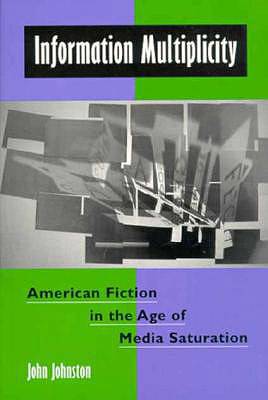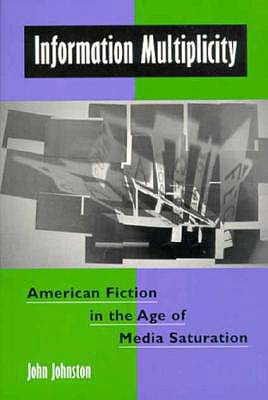
- Retrait gratuit dans votre magasin Club
- 7.000.000 titres dans notre catalogue
- Payer en toute sécurité
- Toujours un magasin près de chez vous
- Retrait gratuit dans votre magasin Club
- 7.000.000 titres dans notre catalogue
- Payer en toute sécurité
- Toujours un magasin près de chez vous
Information Multiplicity
American Fiction in the Age of Media Saturation
John JohnstonDescription
"With the birth of information theory and cybernetics in the late 1940s and early 1950s," writes John Johnston, "a decisive step was taken toward the immense techno-scientific transformation of the world into coded bits of 'information' and machinic assemblages." Beginning with Thomas Pynchon's The Crying of Lot 49, the novels that have reflected this transformation have similarly assembled disparate bits of information and narrative into fictions saturated with data and transcribed "clips" from media such as motion pictures, television, recordings, and computer files.
Realism having thus fractilized into high-speed collage, thought itself is redefined from the High Modernist "stream of consciousness" into what the machine psychologist Daniel Dennett refers to as "multiple drafts" or "circuits" operating concurrently in the human brain. In a series of close readings, Johnston traces how this viral influx of information into human consciousness has been replicated in works by Thomas Pynchon (Gravity's Rainbow and Vineland), Joseph McElroy (Lookout Cartridge), William Gaddis (J.R.), Don DeLillo (Libra), and William Gibson (Necromancer).
From John Johnston's Introduction: "Information multiplicities are profoundly corrosive of older cultural forms and identities, dissolving both subjects and objects alike into systems, processes and nodes in the circuits and flow of information exchange. But they also bring about new kinds of energy and even strange new forms of 'artificial life.' . . . Contemporary culture--or more specifically what is called postmordern techno- or cyberculture--is a restructuring process that can similarly be described: as an artifactual space created when information re-structures modern or traditional culture in order to make it a better habitat for information."
Spécifications
Parties prenantes
- Auteur(s) :
- Editeur:
Contenu
- Nombre de pages :
- 320
- Langue:
- Anglais
Caractéristiques
- EAN:
- 9780801857058
- Date de parution :
- 08-05-98
- Format:
- Livre broché
- Format numérique:
- Trade paperback (VS)
- Dimensions :
- 152 mm x 227 mm
- Poids :
- 439 g







